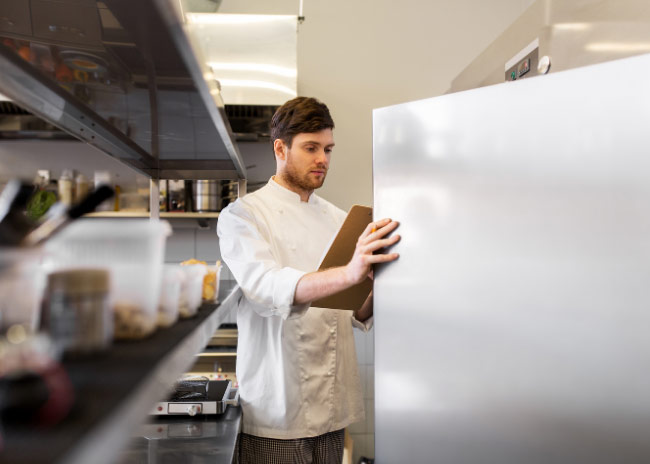 A properly maintained commercial refrigerator is essential to any foodservice operation. It keeps ingredients fresh, protects customers from foodborne illness, and helps prevent costly breakdowns or health code violations. Neglecting your refrigeration equipment can lead to downtime, spoiled inventory, and steep repair bills.
A properly maintained commercial refrigerator is essential to any foodservice operation. It keeps ingredients fresh, protects customers from foodborne illness, and helps prevent costly breakdowns or health code violations. Neglecting your refrigeration equipment can lead to downtime, spoiled inventory, and steep repair bills.
To help you stay ahead of issues, here’s a streamlined guide to maintaining your commercial refrigerator.
1. Clean the Condenser Coils
Your condenser coils play a key role in heat transfer, helping your fridge maintain a stable internal temperature. When they collect dust or debris, efficiency drops and the unit may overheat or fail altogether.
Steps to clean the coils:
- Power down. Always unplug the unit or turn off power before cleaning.
- Locate the coils. They’re usually behind or beneath the fridge, sometimes covered by a panel.
- Brush gently. Use a soft-bristled brush or vacuum with a brush attachment. Clean in the direction of the fins to avoid damage.
- Inspect for damage. Look for bent or broken fins. If you notice any, call a technician.
- Replace the panel. Secure the access cover once you’re finished.
Clean coils every three months or more often in dusty environments.
2. Check the Door Seals
Worn-out door gaskets are a common cause of fluctuating fridge temperatures and high energy bills. A tight seal keeps cold air in and warm air out.
Here’s how to check them:
- Visual check. Look for cracks, tears, or warping—especially around corners and hinges.
- Paper test. Close the door on a dollar bill or sheet of paper. If it slides out easily, the seal is not tight enough.
Inspect door seals every three to four months and replace them as needed to avoid energy waste and inconsistent temperatures.
3. Deep Clean Inside and Out
Sanitation is critical in foodservice. Dirty refrigerators can lead to contamination and health code violations.
Add these steps to your cleaning checklist:
- Empty the fridge. Remove all items and detachable parts (shelves, drawers, trays).
- Toss expired goods. Check dates and dispose of anything that’s gone bad.
- Clean the interior. Use warm water and mild detergent. Pay close attention to sticky spots and spills.
- Wash removable parts. Clean separately and dry thoroughly before reinserting.
- Wipe the exterior. Don’t forget doors, handles, and gaskets. Use a fresh cloth to avoid cross-contamination.
- Clean the condenser coils. (See step one above.)
Do this consistently, such as weekly or monthly, depending on usage and local health regulations.
4. Follow Temperature and Loading Guidelines
To keep food safe and avoid overworking your fridge, it’s essential to stick to the manufacturer’s recommendations.
- Monitor internal temperature. Most commercial fridges should stay between 32°F and 40°F. Check using both built-in and external thermometers to verify accuracy.
- Avoid overloading. Overstuffing blocks airflow and strains the compressor. Leave space between items so cold air can circulate freely.
Refer to your fridge manual for exact specifications. Following these simple guidelines helps improve energy efficiency and equipment lifespan.
5. Schedule Preventative Maintenance
Even with great day-to-day care, professional maintenance is still vitally important. Technicians can spot early signs of wear and perform tasks like:
- Lubricating motors
- Checking electrical connections
- Testing system performance
Regular checkups reduce the risk of breakdowns and extend the life of your equipment. And it’s wise to work with a service provider who offers emergency repairs—just in case something goes wrong unexpectedly.
Keep Your Kitchen Running Smoothly
Preventative maintenance saves money, reduces downtime, and ensures food safety. Smart Care’s nationwide network of 1,500+ trained technicians are here to help with routine service, emergency repairs, and expert refrigeration support—so your commercial kitchen can keep running at full speed.



